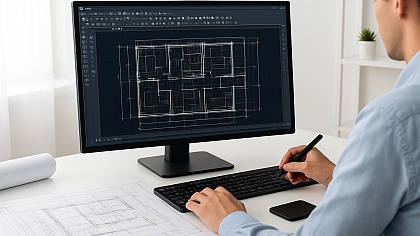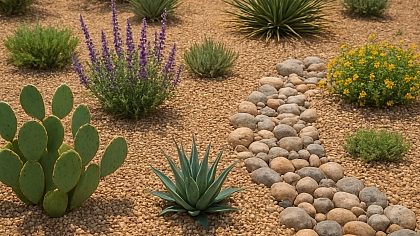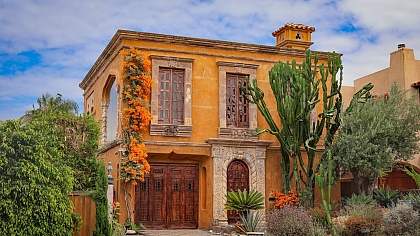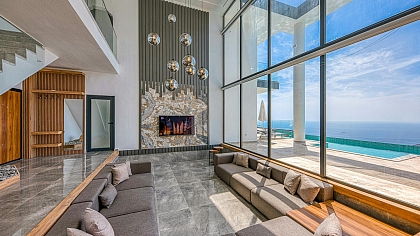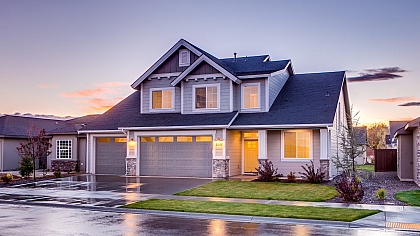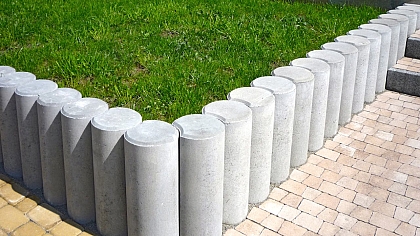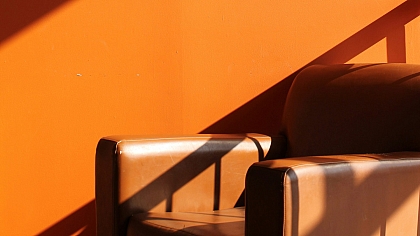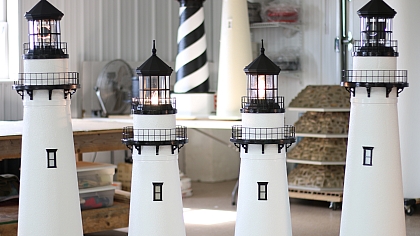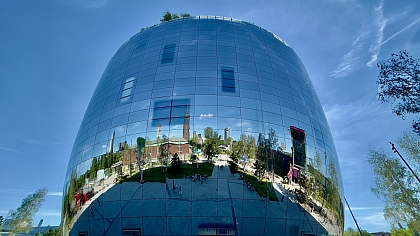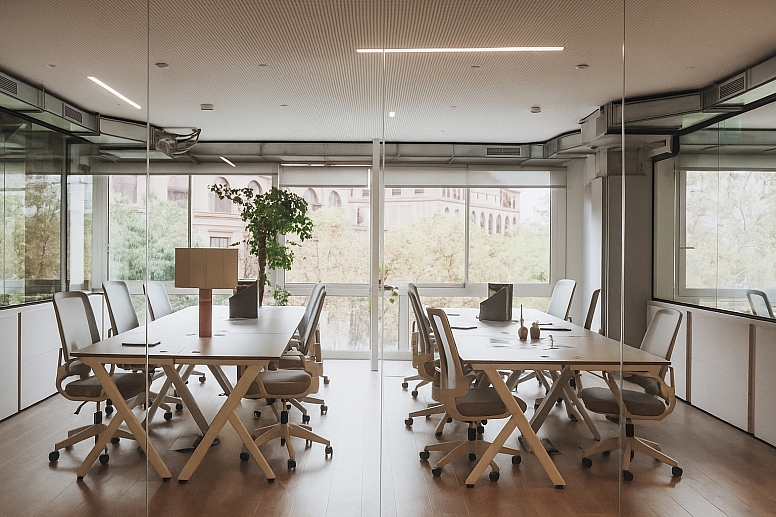
Smart Interior Design: Reduce Burnout in Shared Spaces
Creative professionals are drowning in burnout at alarming rates, with traditional workspaces failing to support their unique mental and emotional needs. A survey found that 49% of remote workers struggle with staying motivated due to household distractions.
Smart interior design for workspaces has emerged as a revolutionary solution, transforming ordinary shared environments into burnout-resistant creative sanctuaries.
Join us as we reveal how strategic design interventions can restore creative energy, boost productivity, and build sustainable artistic careers.
Revolutionary Design Principles That Reduce Burnout in Coworking
Now that we've identified how traditional workspace elements actively contribute to creative exhaustion, it's time to explore the scientifically backed design principles that reverse these harmful effects. These revolutionary approaches transform coworking spaces from burnout accelerators into creative sanctuaries.
Modern coworking for creatives requires a fundamental shift away from generic office aesthetics toward environments that actively restore mental energy. This means creating spaces that don't just look good but actually make people feel better.
Dallas has become a thriving hub for creative professionals seeking alternatives to traditional office environments. The city's dynamic Arts District and growing tech scene have created unprecedented demand for innovative workspace solutions. Operators providing a coworking space in Dallas are leading the charge in implementing burnout-reducing design strategies that support the unique needs of local creative communities.
Biophilic Design Elements for Mental Restoration
Incorporating living plants, natural textures, and organic shapes triggers the brain's relaxation response and reduces stress hormones within minutes. Biophilic design elements work by reconnecting our psychology with natural environments, our brains evolved to find restorative. Green walls, natural wood surfaces, and even nature photography can lower blood pressure and improve mood.
These elements don't require massive budgets—even small potted plants and natural fiber rugs can create significant psychological benefits for creative professionals.
Color Psychology Applications for Creative Energy
Strategic color choices can dramatically influence mood, energy levels, and creative thinking. Warm blues promote calm focus, while earthy greens reduce eye strain and mental fatigue. Accent colors in orange or yellow can stimulate creative thinking when used sparingly in brainstorming areas.
The key is creating color zones that support different types of creative work rather than using one-size-fits-all schemes.
Acoustic Zoning for Focus and Collaboration Balance
Smart design for productivity requires careful attention to sound management through strategic acoustic zoning. This means creating distinct areas with different sound profiles—quiet zones for deep work, collaborative spaces that contain conversation, and social areas where natural noise is welcomed.
Sound-absorbing materials, white noise systems, and physical barriers help create these distinct acoustic environments within shared spaces.
Smart Design for Productivity: Creating Multi-Sensory Creative Environments
Beyond visual design principles lies an even more powerful opportunity—engaging all five senses to create truly restorative work environments. Smart coworking spaces are now utilizing multi-sensory design strategies that don't just prevent burnout but actively boost creative performance.
In the regression analyses adjusted for the Model 1 covariates, work engagement had a statistically significant positive association with task privacy, satisfaction with the work environment, good PE-fit, and workspace support for interaction. This research validates the connection between thoughtful design elements and measurable improvements in professional engagement.
Tactile Materials That Stimulate Innovation
Different textures engage the sense of touch in ways that can actually stimulate creative thinking. Rough natural materials like exposed brick or reclaimed wood provide tactile variety that keeps the nervous system engaged without being overwhelming.
Soft fabrics in seating areas create comfort zones that support relaxation and idea generation. The contrast between smooth and textured surfaces creates sensory interest that can help break creative blocks and inspire new thinking patterns.
Aromatherapy Integration in Workspace Design
Subtle scent design using essential oils or natural materials can influence mood and cognitive function without users even realizing it. Lavender promotes relaxation during stressful deadlines, while citrus scents can increase alertness and creative energy.
The key is keeping scents subtle and natural rather than artificial or overwhelming. Many successful coworking spaces now use HVAC-integrated scent systems that change throughout the day to support different work modes.
Temperature and Air Quality Optimization Systems
Maintaining optimal temperature (between 68-72°F) and air quality directly impacts cognitive performance and creative thinking. Poor ventilation and temperature fluctuations create physical discomfort that draws mental energy away from creative tasks.
Advanced air filtration systems and smart climate controls ensure creative professionals can focus on their work rather than environmental discomfort.
Benefits of Shared Workspaces: Community-Centered Design Strategies
While individual sensory optimization forms the foundation, the true magic of coworking for creatives emerges when design facilitates meaningful human connections. Community-centered design strategies unlock the collaborative benefits of shared workspaces that make them superior to isolated home offices.
Flexible Furniture Systems for Dynamic Collaboration
Modular furniture systems allow spaces to transform throughout the day to support different types of creative work. Tables that can be easily reconfigured for team brainstorming, individual focus work, or casual conversations give creative professionals control over their environment.
This flexibility prevents the spatial monotony that contributes to creative burnout in traditional offices.
Privacy Pods and Retreat Spaces for Introverts
Not all creative professionals thrive in open, collaborative environments. Privacy pods and quiet retreat spaces provide necessary escape routes for introverted creatives who need solitude to recharge and process ideas.
These spaces often feature soft lighting, comfortable seating, and sound isolation to create truly restorative environments within the larger community.
Social Zones That Foster Organic Networking
Carefully designed social areas with comfortable seating, good lighting, and natural conversation flow encourage the organic connections that can lead to creative collaborations. Coffee stations, communal kitchens, and informal meeting areas create opportunities for the serendipitous encounters that often spark innovation.
The design of these spaces should feel more like a living room than a conference room to encourage authentic interactions.
Implementation Blueprint for Existing Coworking Spaces
While futuristic technologies capture our imagination, existing coworking spaces need practical, actionable strategies to reduce burnout in coworking environments today. This implementation blueprint provides realistic pathways for transforming any shared workspace into a creative wellness haven.
Budget-Friendly Burnout Reduction Modifications
Simple changes like repositioning furniture to maximize natural light, adding plants, and creating acoustic barriers with bookshelves can dramatically improve user experience. Paint colors, lighting filters, and textile additions require minimal investment but create significant mood improvements. Strategic use of mirrors can also make spaces feel larger and brighter without expensive renovations.
Phased Renovation Strategies for Minimal Disruption
Smart implementation happens in phases that allow spaces to remain operational while improvements are made. Starting with acoustic improvements and lighting adjustments creates immediate benefits while larger structural changes are planned. This approach also allows operators to test user response and adjust plans based on real feedback.
ROI Calculations for Wellness-Focused Design Investments
Wellness-focused design improvements typically pay for themselves through increased member retention, higher membership rates, and positive word-of-mouth marketing. Members who feel supported and energized in their workspace are more likely to renew memberships and recommend the space to others.
Tracking metrics like member satisfaction, retention rates, and referrals helps quantify the return on design investments.
Comparison: Traditional vs. Wellness-Focused Coworking Design
|
Design Element |
Traditional Approach |
Wellness-Focused Approach |
Impact on Burnout |
|
Lighting |
Static fluorescent |
Circadian-responsive LED |
Reduces afternoon fatigue |
|
Acoustics |
Open, uncontrolled |
Zoned sound management |
Improves focus quality |
|
Color Scheme |
Neutral/corporate |
Psychology-based palettes |
Influences mood/energy |
|
Furniture |
Fixed layouts |
Modular, flexible systems |
Supports work variety |
|
Air Quality |
Basic HVAC |
Advanced filtration |
Enhances cognitive function |
|
Nature Elements |
Minimal/artificial |
Biophilic integration |
Lowers stress hormones |
Creative Workspace Transformation
Smart interior design represents a fundamental shift in how we think about supporting creative professionals' mental health and productivity. The evidence is clear—environments that prioritize sensory wellness, community connection, and flexible functionality don't just prevent burnout; they actively fuel creative potential.
As the creative economy continues growing, spaces that understand this connection will become essential infrastructure for artistic innovation. The investment in burnout-reducing design isn't just about creating prettier workspaces—it's about building sustainable creative careers that can thrive long-term.
Common Questions About Creative Workspace Design
1. How quickly can design changes reduce creative burnout symptoms?
Most creative professionals notice improved mood and energy within 2-3 days of working in a well-designed environment, with significant burnout reduction occurring within 2-4 weeks.
2. What's the most cost-effective design change for preventing creative burnout?
Adding plants and improving lighting typically provides the biggest immediate impact for the lowest cost, often under $500 per workspace area.
3. Do different creative disciplines require different coworking design approaches?
Yes, writers need quiet focus areas, visual artists require good lighting and wall space, while developers benefit from multiple monitor setups and ergonomic furniture.
4. How can freelance creatives evaluate a coworking space's burnout-prevention design?
Look for natural light, acoustic variety, flexible seating options, plants or nature elements, and spaces that make you feel calm rather than stimulated.
5. What role does community design play in preventing creative isolation?
Thoughtfully designed social spaces and collaborative areas help combat the isolation that often leads to creative burnout, especially for freelancers working alone.

